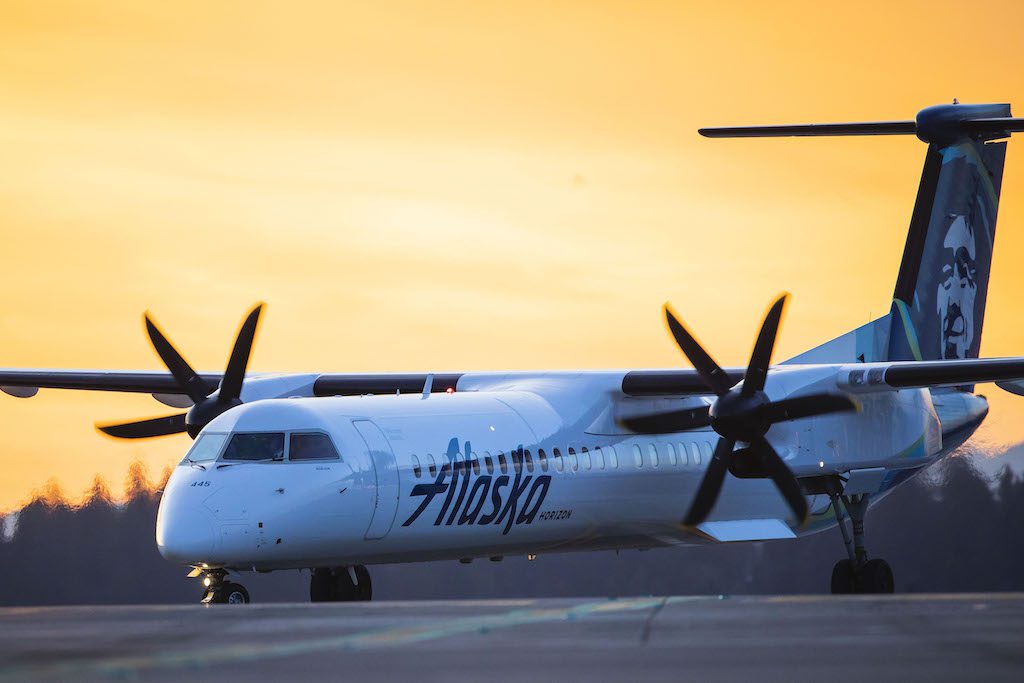Skift Take
Consumers probably would love it if airlines sold more seats than they could reasonably fill because they would see bargain fares. But a race to the bottom could be disastrous for the industry. The situation is bad enough as it is. If airlines must compete by selling bargain fares, some carriers would be in peril.
A top Alaska Airlines executive obliquely warned competitors on Thursday of the dangers of adding too many flights before a real recovery begins, suggesting they could cause lasting damage to the economic fortunes of U.S. carriers.
“We’re in the midst of the biggest demand contraction in the history of our industry,” Alaska President Ben Minicucci said on the airline’s second quarter earnings call. “As we all know, there are far too many seats flying today for the demand that currently exists. Adding capacity back in a disciplined manner is important for the health of the industry and is critical to our company’s cash break-even goals.”
It has been about five years since U.S. airline executives regularly spoke about “discipline” on earnings calls. Most stopped saying the word after the U.S. Department of Justice began investigating whether airlines were illegally signaling each other on earnings calls and in other public forums to collude to keep prices high. Because airline pricing is a function of supply and demand, airlines could boost profits if they agreed to artificially decide to cap the number of seats for sale.
Of course, today’s situation is far different today than in 2015. Airlines are hemorrhaging money, and judging by load factors, U.S. carriers are selling far more seats than the market can absorb. In June, Alaska filled only about half its seats with paying customers and and that was the quarter’s best month, as people in some states emerged from lockdowns and began to travel.
Alaska’s Minicucci did not name the airlines he felt were dumping capacity, but several carriers have sought to increase cash by ramping up flying in recent months. This group includes American Airlines and Spirit Airlines, both of which added flights in the Southeastern United States after beaches reopened.
Other carriers, such as United Airlines, have sought to limit capacity to retain pricing power. United Chief Commercial Officer Andrew Nocella told investors this week the airline was engaging in “careful management of capacity.”
Economics of Low Fares
American has backtracked its strategy recently, as Covid-19 cases increased across much of the United States.
But in April and May, the airline made no apologies for adding flying, with executives arguing they could make money on deeply discounted fares, because fuel was so cheap. At one point, an American executive bragged the airline could make a flight cash positive at 9 percent load factors.
Alaska’s executives suggested they see things differently. While they acknowledged they run a low-fare airline, they also know $20 or $30 one-way fares are not sustainable. And they said airlines need to get the supply-and-demand dynamic right for this unusual situation.
Usually, they noted, airlines can stimulate demand through low fares. But in this crisis, a good percentage of travelers won’t return at any price because of health fears. So it may be better for airlines to focus on travelers who will fly, and are wiling to pay reasonable fares.
“Demand is not something we can fully control, but we are doing our best to earn guest confidence and create the right environment for an eventual strong return in demand,” Minicucci said. “Today, we recognize that customers fall into one of three buckets: those who will travel, those who might travel and those who won’t travel.”
Alaska told investors it plans to do its part to align supply with demand. After cutting 75 percent of capacity in the second quarter, the airline now expects to fly about half of its originally planned schedule for July, August and September. In the fourth quarter, they said they expect to fly about 65 percent of planned capacity.
For at least one year from now, they said, Alaska will be significantly smaller than in 2019. By summer 2021, they said, they still expect capacity will be 20 percent less than 2019 levels.
“We have confidence that our low-fare, low-cost structure and our strong network footprint will continue to be a source of strength,” CEO Brand Tilden said. “But in reality, a recovery to 2019 levels will take at least two years.”
Rough Quarter
Alaska reported a net loss for the second quarter of $214 million. Total operating revenues decreased 82 percent, year-over-year, to $421 million.
“This is a sobering loss,” Tilden said. “It’s the largest quarterly loss in our history, and it’s obviously not a sustainable result.”
The Daily Newsletter
Our daily coverage of the global travel industry. Written by editors and analysts from across Skift’s brands.
Have a confidential tip for Skift? Get in touch
Tags: alaska airlines, covid-19
Photo credit: A Horizon Air turboprop on the ground. Horizon is a subsidiary of Alaska Airlines. Alaska Airlines
